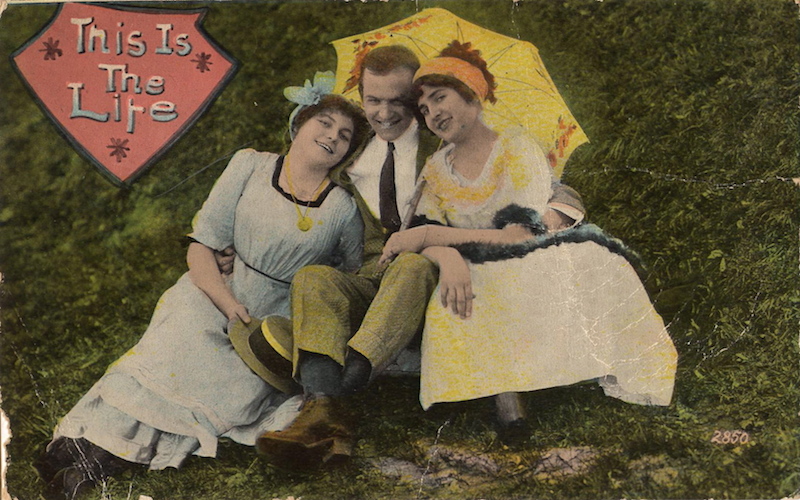
Vice: Why people are fighting to get polyamory recognized as a sexual orientation
The following is an excerpt from a Vice article written by professor Neil McArthur, director of the Centre for Professional and Applied Ethics at University of Manitoba His research focuses on sexual ethics and the philosophy of sexuality. Follow him on Twitter or check out his blog Moral Lust.
Melissa Marie Legge always knew she was different—she just felt it, even before she knew how to talk about that feeling. “Wherever this part of me came from, it has certainly always been there, even before I had words to describe or explain it,” she told VICE. “Consensual non-monogamy gives me the freedom to involve people in my life on my own terms, and to negotiate relationships individually and contextually without having to follow a social script. It’s something that I value highly, and that I would say is a big part of my sexual identity overall.”
That’s how Marie Legge describes being polyamorous, and somewhat controversially, identity is the precise word she uses. While we commonly think of sexual orientation in terms of the gender we’re attracted to, some in the non-monogamy community—a.k.a. those who, defined broadly, have relationships with multiple people simultaneously—say the practice should be considered a “relationship orientation,” recognized in the same way as one’s sexual or gender orientation. In other words, they seek the same social acceptance and legal protections we increasingly grant gays, lesbians, and trans people.
“Consensually non-monogamous clients more often than not tell me this is how they’ve felt their whole life,” Professor Markie Twist, program coordinator for the University of Wisconsin-Stout’s sex therapy program and licensed family therapist, told VICE. “When they were children, they totally felt that way. It was only when they got older that they were told you’re not allowed to like more than one person at the same time.
Not everyone is on board with the drive to recognize polyamory as an orientation. In 2012, popular sex columnist Dan Savage declared that polyamory is “not a sexual orientation. It’s not something you are, it’s something you do.” His comment touched off, in his own words, a “shitstorm.” And in 2013, an Australian woman was fired from her job at a Catholic social services organization after she was found on a list of “poly-friendly” counsellors published on a website for those who practice non-monogamy. She sued on the grounds she was fired for being polyamorous, but a judge rejected her argument, ruling that having multiple partners didn’t qualify as a sexual orientation.
Arguments over poly’s status as an orientation are often more pragmatic than philosophical. On her Practical Polyamory blog, poly advocate Anita Wagner wrote in response to the Savage brouhaha that by recognizing polyamory as such, non-monogamous persons can acquire a sense of identity that “becomes the bedrock upon which we can build a life that will withstand the external cultural challenges we sometimes encounter.” And the fight for such recognition has practical consequences: As Sarah Taub of Network for a New Culture wrote in a discussion at the time, the reason polyamorous people want such recognition “is political, and linked to struggles for rights and freedoms.”
Ann Tweedy, a lawyer who has researched polyamory and the law, argued in a 2010 paper for the University of Cincinnati Law Review that if society accepted non-monogamy as an orientation, the possible legal implications could be significant. In some states, such as Alabama and Florida, polyamory is effectively criminalized through anti-adultery and anti-bigamy laws. In other states, like Connecticut, zoning laws restrict the number of unmarried adults who can live together, laws that have been used against polyamorous families before. No legal recourse exists in the US for someone who, like the Australian counsellor, gets fired for being non-monogamous. Ultimately, many polyamorists would like the right to marry more than one person, as well as gain legal protection against persecution.
But legalities aside, is there a scientific case to be made that polyamory is a state of being, rather than a mere lifestyle? Sari van Anders, who runs the University of Michigan’s neuroendocrinology lab, says there is a fairly robust body of research indicating that our relationship preferences can be linked to distinct and measurable biological states. Non-monogamous people, for example—both men and women—show measurably higher levels of testosterone. She points out, however, that this correlation tells us nothing about its causation—we have no idea to what extent higher testosterone levels lead to, or are the result of, non-monogamous behavior.






